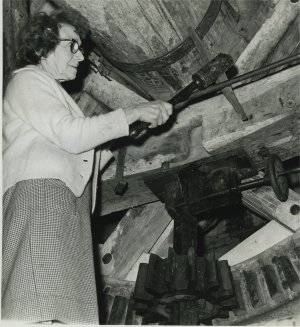
Conclusion

This investigation has endeavoured to reveal the involvement of women in the milling industry, from the early modern period until today. Hopefully the contribution of women to the milling industry and profession has in this way been further made known. Although milling has been, and largely remains, a male dominated industry, the contribution of women today and in past centuries has been significant and crucial.
It was not uncommon for a woman to take on the responsibility of a mill out of absolute necessity, in order that her family could survive. Neither was it unusual for the wife of a miller to be widowed whilst her sons were too young to take on the responsibility of the mill and she had no other male relatives to step forward and assist her. As previously discussed, milling was a dangerous profession and mortality was high. In this situation, the widow had the responsibility to not only ensure the survival of the family milling business, but to guarantee the economic survival of her family. Similarly, a woman may have had to take on the running of a mill if male members of her family were called away to war or otherwise prevented from milling. It is important to note this was not only the case in the milling industry: the wives of farmers, for example, would be expected to take on similar responsibilities if necessity dictated it.
Whether through direct or indirect involvement, women have played a critical role in milling. In many cases, women were responsible for the continued existence of a family milling businesses, that otherwise may have vanished. In this way, women played a prominent role in facilitating the survival of traditional milling.